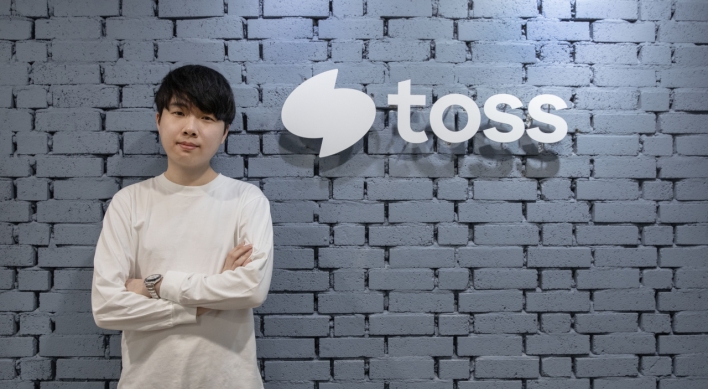The One Belt, One Road initiative is a key focus of China’s foreign policy. As it is the most cherished project of President Xi Jinping, the Beijing government is mobilizing its massive diplomatic and financial resources for the initiative.

The project, which aims to link the countries that were on the ancient Silk Road routes — the land- and ocean-based ones — through transportation and infrastructure networks, started two years ago. It involves about 50 countries in areas as vast as Central Asia, Middle East, Southeast Asia, Europe and North Africa.
Xi outlined the land-based Silk Road Economic Belt policy in September 2013 during his visit to Kazakhstan. He proclaimed the 21st Century Maritime Silk Road initiative in Indonesia one month later.
Thereafter, the project, commonly called the Belt and Road initiative, has become a top national agenda for government officials, diplomats, academics and the state-run media.
It simply has become so big a national craze that a short stay in the southern city of Nanning during the annual China-ASEAN Expo last week was sufficient for a visitor to ascertain the country’s eagerness to push the project.
The expo, a signature project for promoting relations between China and the Association of Southeast Asian Nations, has taken place every year since 2004, with this year’s event geared to promote the Maritime Silk Road, for which ASEAN forms a core platform.
The Chinese couldn’t have chosen a better place than Nanning and the broader Guangxi Zhuang autonomous region, because the region is considered China’s gateway to Southeast Asia. There were signboards everywhere in the city, bearing slogans like “A Grand Opening for the vision of the Silk Road” and “Gather at CAEXPO, Tap Belt and Road Opportunities.”
Noble intentions?
Many Chinese I saw in Nanning spoke about their noble intentions and the positive aspects of the initiative.
Vice Premier Zhang Gaoli, speaking at the expo opening ceremony, took the lead in asserting the positive aspects of the initiative for enhancing regional connectivity, which he said “would deepen cooperation and exchange of our regions as our ancestors did 2,000 years ago.”
Chen Bingcai, a scholar from the Chinese Academy of Governance, said the initiative was not exclusive and that it was compatible with similar strategies in other countries. Speaking at a media forum, he also said the project could be connected to South Korea and Japan. (Hearing that they even launched infrastructure projects in countries as far apart as Laos and Serbia, I have to admit that President Park Geun-hye’s Eurasia Initiative pales so much in comparison to the Chinese initiative.)
The forum, cohosted by the China Daily and the Asia News Network — an alliance of 23 newspapers in Asia — drew executives and editors, as well as foreign and local experts and Chinese government officials.
What was good was that the Chinese organizers made sure the participants could get some “balanced” views. This was necessary because there are misgivings about China’s intentions.
After all, a project of this kind cannot be free from politics. You need look no further than the maritime territorial disputes in the South China Sea, which pits China against some ASEAN members.
Li Mingjiang, a professor from Nanyang Technological University in Singapore, said ASEAN was largely positive about the Belt and Road initiative, mainly due to its potential for long-term economic development.
He said countries like Thailand, Cambodia, Laos endorsed the Chinese initiative without any reservation. The deputy prime ministers of Thailand and Laos indeed offered their full support in their opening speeches.
The Laotian deputy prime minister, speaking in Mandarin, even praised the initiative as a “farsighted” vision, and expressed appreciation to China for helping with its satellite and railroad projects, which he said were turning his country “from a land-locked nation to a land-linked nation.”
Misgivings
The second group, Li said, is largely supportive, but has notable concern that the initiative could become a political and strategic tool. This group includes Singapore, Indonesia, Malaysia and Brunei.
Then comes the third group: They are the least supportive, for understandable reasons such as the disputes in the South China Sea. They include Vietnam, the Philippines and Myanmar. It was not surprising that the Vietnamese executive deputy prime minister, speaking at the expo opening ceremony, said the Chinese proposal was welcome, but without forgetting to emphasize “equality.”
Zhao, the vice premier, said that China will resolve the maritime disputes with its neighbors through negotiation and based on political mutual trust. He noted that China and ASEAN would hold a defense ministers’ meeting next month.
But it will not be easy for China to — as Zhao promised — promote the initiative by allaying the lingering suspicions held not only by the ASEAN countries but also other powers like Europe, the U.S. and Japan, which may see the Chinese westward march as part of its work to build an empire.
“I wonder if it’s possible for China and these external powers to work out a formal mechanism so that the external powers don’t feel threatened,” Li said.
By Chon Shi-yong
Chon Shi-yong is the chief editorial writer of The Korea Herald. He can be contacted at sychon@heraldcorp.com">sychon@heraldcorp.com. — Ed.



![[AtoZ into Korean mind] Humor in Korea: Navigating the line between what's funny and not](http://res.heraldm.com/phpwas/restmb_idxmake.php?idx=644&simg=/content/image/2024/04/22/20240422050642_0.jpg&u=)


![[Herald Interview] Why Toss invited hackers to penetrate its system](http://res.heraldm.com/phpwas/restmb_idxmake.php?idx=644&simg=/content/image/2024/04/22/20240422050569_0.jpg&u=20240422150649)
![[Graphic News] 77% of young Koreans still financially dependent](http://res.heraldm.com/phpwas/restmb_idxmake.php?idx=644&simg=/content/image/2024/04/22/20240422050762_0.gif&u=)



![[Exclusive] Korean military set to ban iPhones over 'security' concerns](http://res.heraldm.com/phpwas/restmb_idxmake.php?idx=644&simg=/content/image/2024/04/23/20240423050599_0.jpg&u=20240423171347)



![[Exclusive] Korean military to ban iPhones over security issues](http://res.heraldm.com/phpwas/restmb_idxmake.php?idx=652&simg=/content/image/2024/04/23/20240423050599_0.jpg&u=20240423171347)



![[Today’s K-pop] Ateez confirms US tour details](http://res.heraldm.com/phpwas/restmb_idxmake.php?idx=642&simg=/content/image/2024/04/23/20240423050700_0.jpg&u=)